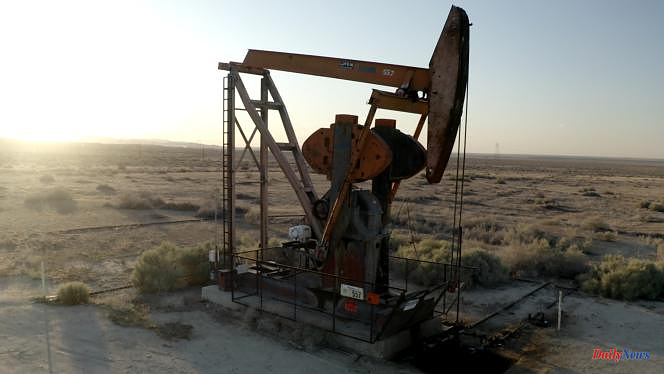The figure is dizzying and yet unknown: 20 million to 30 million oil and gas wells are abandoned worldwide by the oil industry. They generate extensive soil pollution, aggravate climate change and harm health. In an edifying documentary, Audrey Gloaguen accompanied the whistleblowers who track down these "ticking time bombs" and denounce their deleterious consequences.
In the United States, in Germany, in the North Sea: each time, history repeats itself. These old boreholes release oil, toxic substances and, above all, methane, a greenhouse gas much more powerful than CO2, underground, at the bottom of the sea or in the atmosphere.
In Bradford (Pennsylvania) and Allegany (New York), several houses were reduced to crumbs – without causing any victims – after having exploded, in 2011 and 2019, under the effect of methane seeping into the earth. In Texas, a gigantic toxic lake continues to grow, formed by water spat out of a well, and releases methane and hydrogen sulphide, a deadly gas. Further on, entire swaths of land have collapsed, forming vast chasms.
Nausea, vomiting
In the suburbs of Los Angeles, a huge gas leak on the site of Aliso Canyon, a former oil well transformed into a gas storage, caused nausea, vomiting or rashes among residents between 2015 and 2016. Several thousands of families had to be temporarily relocated. In France, 12,500 wells are no longer in use, half of them in Alsace. Some are supervised, but others are not.
How is it possible ? Some of these "zombie wells" have been abandoned by companies that have disappeared into thin air, others have been declared inactive by companies unwilling to pay the cost of plugging, or poorly plugged by unscrupulous contractors. . The survey also shows oil companies trying to hide the scandals and health authorities turning a blind eye.
Audrey Gloaguen involves many local residents and experts – doctor, environmental engineer, oceanographer or director of a water conservation district – and immerses us in multiple archives and reports. The director also makes it possible to visualize this pollution much more discreetly than an oil spill: drone shots reveal unused pump jacks as far as the eye can see, while infrared cameras locate methane leaks.
However, we regret that the oil industry does not speak in the documentary. The survey, already thoroughly researched, could have gained in depth with more context: by mentioning, for example, the figures for oil production in the United States, past and present, and methane emissions generated in certain American states by ghost wells, which scientific studies have documented.












